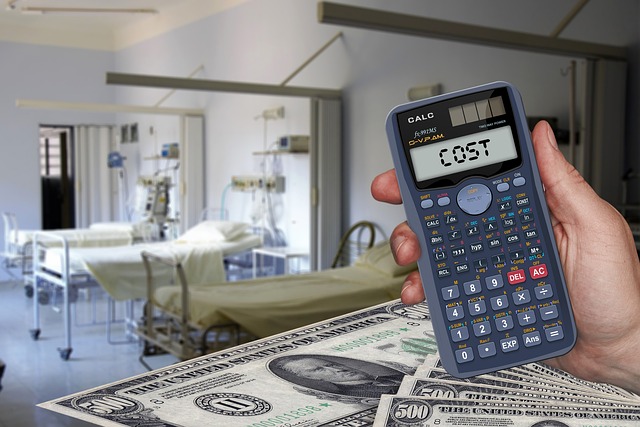Semaglutide, a GLP-1 receptor agonist, is a game-changer in Type 2 Diabetes (T2D) management, offering improved glycemic control and weight loss compared to similar drugs. Despite its higher upfront cost, semaglutide's long-term benefits—including reduced HbA1c levels, fewer complications, and simplified treatment adherence—lead to significant savings for patients and healthcare systems. Its once-weekly administration and effectiveness in lowering blood sugar levels make it a compelling option despite the initial outlay, potentially improving patient outcomes and quality of life while reducing medical expenses over time.
The rising costs of diabetes medication have driven a need for effective, affordable treatments. Among newer options, semaglutide, a glucagon-like peptide-1 (GLP-1) receptor agonist, has garnered attention. This article delves into the cost comparison of semaglutide with other diabetes medications, analyzing direct and indirect expenses. From understanding semaglutide’s mechanism to exploring its efficacy in clinical studies, we examine how this drug stacks up in terms of both effectiveness and affordability, providing insights into emerging trends in diabetes care.
Understanding Semaglutide: A Glucagon-Like Peptide-1 Receptor Agonist

Semaglutide is a medication that has gained significant attention in recent years, particularly for its role in managing type 2 diabetes. It belongs to a class of drugs known as glucagon-like peptide-1 (GLP-1) receptor agonists. These medications mimic the effects of a natural hormone produced by the gut, which stimulates insulin release and suppresses glucagon production after eating.
By activating GLP-1 receptors, semaglutide improves glycemic control, reduces appetite, and promotes weight loss. This multi-faceted approach makes it not just an effective treatment for diabetes but also a potentially cost-effective one in the long term. Understanding these mechanisms is crucial when comparing the cost of semaglutide with other diabetes medications, as it offers a unique combination of benefits that could influence patient outcomes and healthcare expenses.
The Role of Semaglutide in Type 2 Diabetes Management

Semaglutide is a groundbreaking medication that has made significant waves in Type 2 Diabetes (T2D) management. This injectable drug mimics a natural hormone, GLP-1, which stimulates insulin production and suppresses glucagon release, leading to improved blood sugar control. By mimicking the body’s natural response, semaglutide offers a safe and effective approach to managing T2D.
In recent years, the cost of semaglutide has been a topic of discussion among healthcare professionals and patients alike. Despite its high upfront cost compared to other diabetes medications, numerous studies demonstrate its long-term benefits. Semaglutide has been shown to reduce HbA1c levels, promote weight loss, and lower the risk of cardiovascular events in patients with T2D. These advantages make a strong case for its use, especially when considering the potential long-term savings in healthcare expenses associated with diabetes complications.
Current Market Options: Other Medications for Diabetes Control

In the current market, a variety of medications are available for diabetes control, each with its own unique mechanism of action and associated costs. Besides semaglutide, several other options are widely used and recognized by healthcare professionals. Metformin, a first-line medication, is known for its affordability and effectiveness in lowering blood sugar levels. Other commonly prescribed drugs include sulfonylureas, such as glyburide and glipizide, which stimulate insulin production. Additionally, thiazolidinediones like pioglitazone help improve insulin sensitivity. For those with inadequate glycemic control on these standard therapies, DPP-4 inhibitors like sitagliptin or vildagliptin can be added to enhance insulin secretion and reduce blood sugar.
The cost of semaglutide compared to these alternatives is a significant consideration for patients and healthcare providers alike. Semaglutide offers unique benefits, such as once-weekly administration and substantial glycaemic control, but its higher price point may limit accessibility. Understanding the relative costs and efficacy of these medications is crucial for making informed decisions regarding diabetes management.
Direct Cost Comparison: Semaglutide vs. Other Diabetes Drugs

When comparing the direct costs of semaglutide with other diabetes medications, several factors come into play. Semaglutide, a novel glucose-lowering drug, stands out due to its relatively high upfront cost compared to traditional oral hypoglycemic agents. However, this higher price point can be offset by its long-acting nature and once-weekly administration, reducing treatment burden. In many cases, the cost of semaglutide is justified by its potential to lower hemoglobin A1c levels more effectively and with fewer side effects than other available options.
Direct comparisons reveal that while initial costs may be higher for semaglutide, its long-term value becomes evident. Over time, consistent blood sugar control can lead to fewer complications and reduced healthcare expenses associated with diabetes management. This cost-effectiveness is further enhanced by patient adherence and convenience, as semaglutide’s once-weekly injection simplifies dosing routines compared to the frequent pill regimens required by some alternative medications.
Indirect Cost Analysis: Exploring Insulin Therapies vs. Semaglutide

In the realm of diabetes management, a comprehensive analysis of treatment costs is essential to understand the economic implications for patients and healthcare systems. Indirect cost analysis provides valuable insights into the long-term financial impact of different medications, including semaglutide. When comparing insulin therapies with semaglutide, several indirect factors come into play that influence patient outcomes and resource utilization.
Semaglutide, a glucagon-like peptide-1 (GLP-1) receptor agonist, has gained recognition for its cost-effectiveness compared to traditional insulin regimens. This comparison extends beyond the direct medication costs. Indirect expenses such as reduced medical resources due to improved glycemic control, fewer complications, and potential savings from reduced hospitalizations can be attributed to semaglutide therapy. These indirect benefits contribute to a more comprehensive understanding of the cost-efficiency of semaglutide in managing diabetes, making it an attractive option for both patients and healthcare providers.
Patient Access and Affordability: Barriers and Facilitators

Patient access and affordability play a pivotal role in determining the accessibility and adoption of medications, including semaglutide. The cost of semaglutide has been a topic of discussion among healthcare professionals and patients alike, as it can significantly impact treatment decisions. High medication costs often pose barriers to patient access, particularly for those without adequate insurance coverage or facing financial constraints. This challenge is further exacerbated by the dynamic pricing strategies employed by pharmaceutical companies, which can make generic alternatives less attractive due to varying prices.
However, several facilitators can enhance patient access. Many insurance providers offer flexible plans with different co-pay options and pharmacy networks, enabling patients to choose affordable options tailored to their needs. Additionally, patient assistance programs and copayment cards can help offset the cost of semaglutide for those who qualify. These initiatives demonstrate a growing recognition of the importance of making essential medications more accessible and affordable, thereby fostering better health outcomes and improved quality of life for patients.
Clinical Efficacy Studies: Comparing Semaglutide with Competitors

Clinical efficacy studies have consistently shown that semaglutide, a medication for type 2 diabetes, offers significant benefits in terms of blood sugar control when compared to other drugs in its class. These studies have demonstrated that semaglutide can reduce HbA1c levels (a measure of long-term blood glucose control) by up to 1.5% more than competitor medications, such as liraglutide and exenatide. This improved efficacy is a key factor driving the cost of semaglutide, as healthcare providers recognize its superior performance in managing diabetes.
Furthermore, while semaglutide’s initial cost may be higher than that of some alternatives, its long-term benefits can lead to substantial savings for patients and healthcare systems. The medication’s once-weekly administration schedule also simplifies treatment adherence compared to daily or twice-daily injections required by certain competitors, potentially improving patient outcomes and satisfaction.
Long-term Savings: A Comprehensive Look at Treatment Costs

When evaluating the cost of semaglutide, a long-term perspective reveals significant savings potential compared to other medications for treating type 2 diabetes. While the initial outlay for this injectable medication might be higher than that of oral drugs, ongoing research demonstrates its ability to reduce overall healthcare expenses over time. Semaglutide’s effectiveness in lowering blood sugar levels can lead to a decrease in diabetic complications, reducing the need for frequent medical interventions and associated costs.
A comprehensive look at treatment costs involves considering not only the medication price but also potential reductions in hypoglycemic episodes, hospital stays, and other diabetes-related expenses. Studies have shown that patients on semaglutide therapy often experience fewer adverse events requiring medical attention, translating to lower insurance claims and out-of-pocket expenses for both patients and healthcare providers. This long-term savings aspect makes semaglutide a compelling option, especially when compared to the cumulative costs of alternative medications over an extended period.
Emerging Trends in Diabetes Care: Semaglutide's Position in the Market

In recent years, the landscape of diabetes care has witnessed a surge in innovative treatments, driven by emerging trends that prioritize patient comfort and outcomes. Among these, semaglutide has emerged as a game-changer due to its unique mechanism of action and comprehensive benefits. This injectable medication mimics a natural hormone, enhancing insulin secretion and suppressing glucagon release, leading to significant improvements in blood sugar control.
Semaglutide’s position in the market is further strengthened by its cost-effectiveness compared to other diabetes medications. While the initial investment for semaglutide treatment might be higher than some alternatives, long-term savings become evident. Studies show that semaglutide can reduce healthcare costs by minimizing complications associated with poorly managed diabetes, such as kidney disease and cardiovascular events. This not only improves patient quality of life but also offers substantial economic advantages for both patients and healthcare providers.
